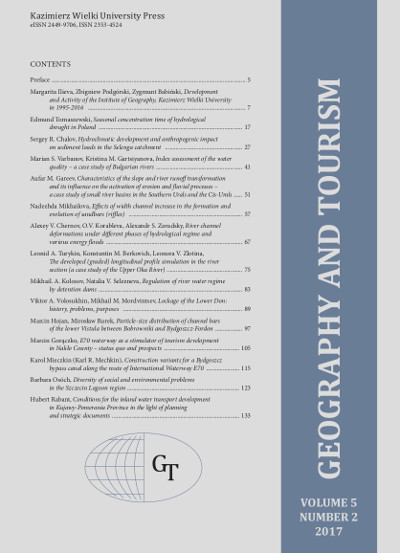River channel deformations under different phases of hydrological regime and various energy floods
Keywords:
floodplain, river alluvium, horizontal deformations of river channel, erosion of river banks, flash floodsAbstract
The paper presents the results of the regular bank erosion monitoring on three rivers of the Eastern European (Russian) Plain: the Kerzhenets River (left tributary of the Volga River), the Sherna River (left tributary of the Klyazma River) and the Tarusa River (left tributary of the Oka River). The first two rivers are characterised by wide floodplains and meandering channels, the third one is distinguished by an incised straight channel and a narrow floodplain. Results of the bank erosion monitoring carried out twice a year – after a spring snowmelt flood and a summer low-water period - over the last 5-15 years allowed the authors to arrive at the following conclusions: 1. Bank erosion and channel lateral migration were observed only during the flood events. No channel deformations were observed during the low-water periods on the rivers of the humid temperate climate zone. 2. Bank erosion and channel lateral migration were observed only during the years with the highest flood magnitude, regardless of the stream bed sediment grain size composition. In the years with moderate flood events, bank erosion occurred, but its rates were inconsiderable and comparable to the measurement accuracy limit. During dry years, no channel deformations were observed. 3. As a consequence of the meander development and its sinuosity changes, zones of the maximum concave bank retreat change their locations along the meander. First, the maximum erosion rate zone occupies most of the concave bank
length, then moves towards the lower limb and concentrates at the meander apex when reaching the maximum sinuosity.
4. Formation of cutoffs in a high-sinuosity meander is mainly associated with intrinsic mechanisms of the meander self-development and to a lesser extent with a flood magnitude. In this case, the main factor of the cutoff process is a very
fast increase in the channel longitudinal profile gradient, rather than flood discharge.

